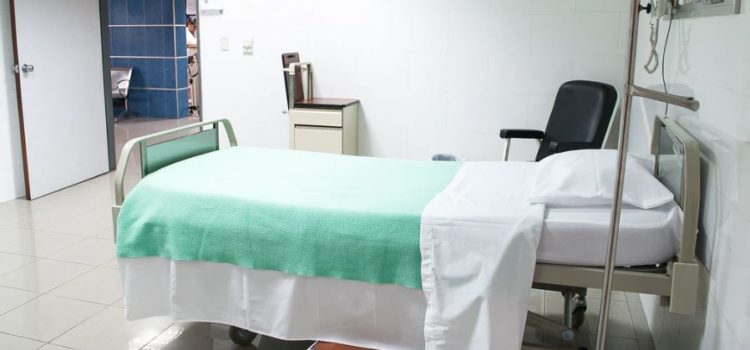

This article is an excerpt from the Shortform summary of "The Immortal Life of Henrietta Lacks" by Rebecca Skloot. Shortform has the world's best summaries of books you should be reading.
Like this article? Sign up for a free trial here .
Who was the daughter of Henrietta Lacks that died only a few years after her mother? Why was Elsie Lacks committed to the Hospital for Negro Insane? How was she treated at this facility with a record of experimentation and abuse?
Elsie Lacks was the second child of Henrietta Lacks. She was diagnosed with “idiocy” and committed to the Hospital for Negro Insane. Elsie Lacks’ medical records show that she suffered abuse, experimentation, and mistreatment.
Learn about the short and tragic life of Elsie Lacks, Crownsville and its atrocities, and how the records were found.
Skloot had promised to help Deborah find information on her sister Elsie. The day after the visit to Lengauer’s lab, Skloot and Deborah began a weeklong trip that would take them to Crownsville, MD, Clover, and Roanoke, to the house where Henrietta was born.
Elsie Lacks’ Crownsville Years
The institution where Elsie lived most of her life, the Hospital for the Negro Insane, was now the Crownsville Hospital Center, a state-of-the-art medical facility. As Skloot and Deborah walked the halls, the place appeared to be abandoned; and when they came across a room labeled “Medical Records,” they found that the room was empty. They were unable to find Elsie Lacks’ medical records there.
Eventually they found someone to help them: a bushy-bearded man named Paul Lurz. After Deborah told him about Elsie—that people thought she was disabled but that Deborah suspected she was just deaf—Lurz rose and went to a storage cabinet. Although most of Crownsville’s medical records from between 1910 and the late fifties had been destroyed—the documents had become contaminated with asbestos—Lurz had saved some clothbound books full of autopsy reports.
Finding Records for Elsie
Miraculously, he had a book that contained reports from 1955. Even more miraculously, there was a record for Elsie Lacks. And even more miraculously than that, the record contained a picture of Elsie as a girl. In the picture, Elsie is screaming and crying, her head held in place against height measurements on a wall by a white staff member at the Hospital for Negro Insane. The report itself revealed that Elsie was diagnosed with “idiocy” likely because she and/or her mother was syphilitic, and that, for six months prior to her death, she’d forced herself to vomit by sticking her fingers down her throat.
As Skloot, Deborah, and Lurz were reading the report, a man burst into the room and questioned them. Deborah presented documents proving she was a relative of Elsie’s and had a right to view Elsie Lacks’ medical records.
Deborah submitted a request to have copies made of Elsie Lacks’ medical records, and Lurz left Skloot and Deborah with some archival documents to look through while he made the copies. A 1958 article from the Washington Post revealed that Crownsville, MD in the ’50s was more awful than Skloot and Deborah had imagined. For Elsie Lacks, Crownsville was likely just as bad. In 1955, the facility was 800 patients over capacity. Patients with all sorts of diagnoses—from dementia and TB to “low self-esteem”—were grouped together in airless rooms, and many patients had to share beds, sleeping head to toe on twin mattresses. Some rooms had drains on the floor rather than toilets.
Skloot would later learn that doctors had performed experiments on Crownsville patients without their consent. One study concerned pneumoencephalography, a procedure that allowed for crisp X-rays of the brain by draining the natural fluid that surrounds and protects the brain. The side-effects of pneumoencephalography were many, including seizures, nausea, headaches, and permanent brain damage. When Skloot consulted Lurz about the study, he said that, given the years the study was conducted, it was likely Elsie Lacks’ Crownsville time included being experimented on.
Following the Trail to Annapolis
After learning about Crownsville, MD and what had happened to Elsie Lacks, Deborah was surprisingly upbeat. Lurz had informed them the Maryland State Archives in Annapolis had any surviving records that weren’t on the Crownsville, MD hospital grounds, and Deborah was keen to go there immediately (despite Skloot’s gentle probing of her emotional state).
There were no further records concerning Elsie in Annapolis, so Deborah and Skloot drove on to Clover. Each time they stopped, Deborah would approach strangers and, apropos of nothing, present them with the picture of Elsie and introduce Skloot as her “reporter.” Deborah would also pull over occasionally to relate to Skloot her latest idea about her mother’s legacy; on one occasion, Deborah was near tears: She said she couldn’t keep her eyes on the road because she kept looking at the copy of the picture of Elsie.

———End of Preview———
Like what you just read? Read the rest of the world's best summary of Rebecca Skloot's "The Immortal Life of Henrietta Lacks" at Shortform .
Here's what you'll find in our full The Immortal Life of Henrietta Lacks summary :
- How Henrietta's cells became used in thousands of labs worldwide
- The complications of Henrietta's lack of consent
- How the Lacks family is coping with the impact of Henrietta's legacy






